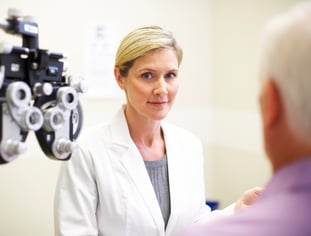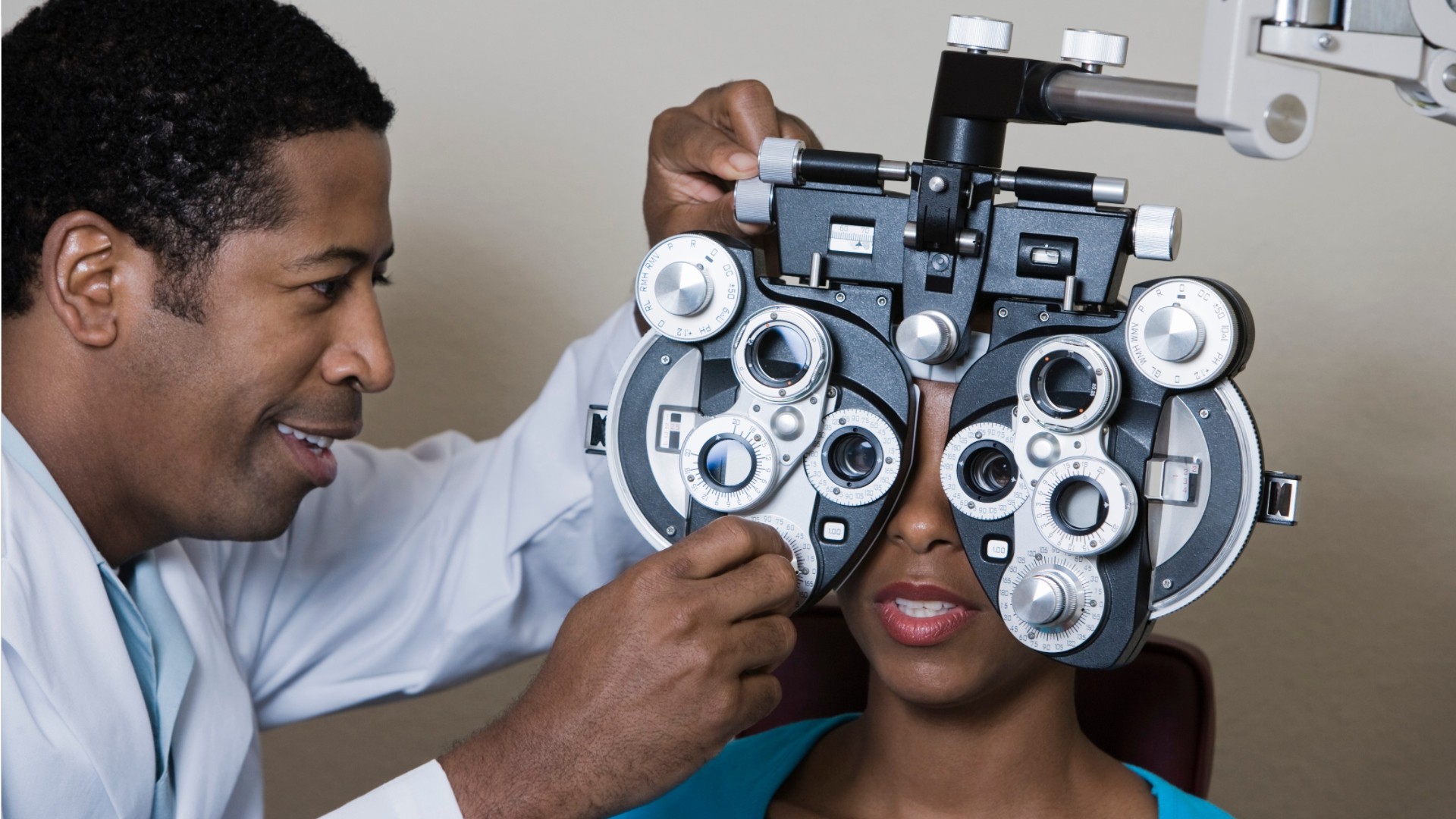Explore Advanced Providers at Opticore Optometry for Eye Wellness
Explore Advanced Providers at Opticore Optometry for Eye Wellness
Blog Article
Checking Out the most up to date Technological Developments in Optometry and What They Mean for Eye Doctors
From the accuracy of Optical Comprehensibility Tomography to the nuanced understandings used by AI-driven diagnostic devices, these innovations are setting brand-new standards in person assessment and therapy. As these developments penetrate the practice, eye doctors are faced with the obstacle of embracing these tools to enhance individual results.
Innovations in Diagnostic Equipment
Advancing the field of optometry, innovations in diagnostic devices have transformed the way eye care specialists assess and identify ocular problems and visual disabilities. The past years has actually experienced substantial technological developments, enabling even more thorough and precise assessments. Optical Comprehensibility Tomography (OCT), for instance, gives high-resolution cross-sectional photos of the retina, permitting for the very early detection of illness such as glaucoma and age-related macular deterioration. This non-invasive imaging strategy has become important in contemporary optometric method.
An additional secret innovation is the introduction of advanced corneal topography systems, which map the surface area curvature of the cornea with precision. These tools are especially valuable for suitable contact lenses and detecting corneal disorders. Digital retinal imaging has transformed traditional ophthalmoscopy, using thorough, breathtaking views of the retina that assist in extensive aesthetic evaluations.
The advancement of wavefront aberrometry has actually additionally been important, enabling the analysis of refractive errors with unmatched precision (Eye Doctor). This technology assists in customizing rehabilitative lenses and boosting surgical outcomes for refractive surgical treatments. Jointly, these diagnostic developments encourage optometrists to deliver superior client care, making sure early intervention and customized therapy techniques, eventually improving aesthetic health outcomes
AI in Patient Monitoring
Structure on the structure of advanced analysis devices, the consolidation of synthetic intelligence (AI) in individual monitoring represents a transformative jump for optometry. AI systems are significantly used to boost effectiveness, precision, and customization in individual treatment.
In addition, AI-driven platforms help with structured patient interactions and management procedures. Automated scheduling, digital examinations, and personalized follow-up strategies not just boost individual fulfillment but likewise enhance time management for practitioners. These systems can triage patients based on the seriousness of their problems, guaranteeing that those in crucial requirement receive prompt attention.
Moreover, AI enhances decision-making by giving optometrists with evidence-based referrals and treatment paths. By incorporating information from digital health and wellness records, AI tools offer insights that notify professional choices, reducing the threat of errors and boosting person results. As AI continues to advance, its function in individual administration will likely expand, improving the landscape of optometric treatment.
Advances in Retinal Imaging
In the world of optometry, retinal imaging has experienced exceptional technological developments that are enhancing analysis capabilities and patient care. Technologies such as Optical Coherence Tomography (OCT) and fundus digital photography have actually reinvented exactly how eye doctors visualize and examine the retina. OCT, in particular, gives high-resolution, cross-sectional images of the retina, enabling for the comprehensive examination of its layers. This capability is indispensable for early discovery and administration of conditions like glaucoma, diabetic person retinopathy, and age-related macular deterioration.
Enhanced imaging techniques like OCT angiography are additional refining diagnostic precision. Optometrist Chino. Such advancements facilitate the recognition of min retinal changes that could represent illness progression.
In addition, developments in expert system are enhancing retinal imaging by enabling automatic analysis of large datasets. These systems help optometrists in identifying patterns a measure of pathology, thereby improving diagnostic accuracy and effectiveness. Jointly, these technologies are changing retinal imaging right into a foundation of contemporary eye care, enhancing results and increasing restorative opportunities.
Teleoptometry's Growing Role
Teleoptometry is significantly ending up being an essential part of eye care, driven by advancements in data and analysis tools. As optometry welcomes electronic transformation, teleoptometry promotes remote examinations, allowing eye doctors to expand their solutions beyond standard limits. This is especially helpful in rural and underserved locations where accessibility to specialized eye treatment is frequently restricted. By leveraging high-resolution video conferencing and progressed retinal imaging, optometrists can carry out thorough eye tests from afar, making certain prompt medical diagnosis and therapy.
The integration of expert system (AI) more boosts teleoptometry, allowing the analysis of visual information and assisting in the discovery of eye conditions such as glaucoma and diabetic retinopathy. AI-powered formulas can swiftly interpret complex imaging information, giving optometrists with important insights that bolster scientific decision-making.
Moreover, teleoptometry sustains connection of treatment via seamless assimilation with digital health records (EHRs), permitting optometrists to preserve comprehensive client backgrounds. This makes certain that individuals obtain consistent and personalized treatment also when seeking advice from with different practitioners.
Despite these advantages, challenges stay, including making sure information protection and managing patient expectations. Nevertheless, teleoptometry stands for a substantial stride in the direction of more accessible, efficient, and patient-centered eye care. As technology progresses, its function is positioned to broaden additionally.

Future Fads in Eye Care
A myriad of ingenious fads is established to reshape the future of eye go to this site treatment, driven by technical innovations and the developing needs of individuals. One significant pattern is the combination of expert system (AI) in diagnostics, which assures to boost the precision and performance of eye evaluations. AI algorithms can assess huge quantities of information from retinal images, potentially detecting conditions like diabetic person retinopathy and glaucoma earlier than conventional approaches.
Furthermore, customized medicine is gaining traction in optometry, with hereditary screening notifying tailored treatment strategies. This strategy intends to enhance individual outcomes this post by tailoring interventions to individual genetic accounts. Wearable innovation, such as wise call lenses, is additionally imminent, supplying real-time tracking of intraocular pressure or sugar levels, therefore providing continuous insights into ocular and systemic health and wellness.
The adoption of augmented fact (AR) and online reality (VIRTUAL REALITY) in training and person education and learning is an additional arising trend. These technologies offer immersive experiences that can boost understanding and skills both for optometrists and people. As these fads evolve, optometrists must remain abreast of technological improvements to provide cutting-edge treatment, ensuring enhanced client end results and satisfaction in the vibrant landscape of eye treatment.
Conclusion

Collectively, these diagnostic improvements empower useful link eye doctors to provide superior person treatment, ensuring very early intervention and customized treatment techniques, eventually enhancing visual health and wellness outcomes.

As these modern technologies continue to progress, eye doctors have to adapt and incorporate them into practice, ultimately optimizing operations performance and elevating the requirement of eye treatment supplied to individuals.
Report this page